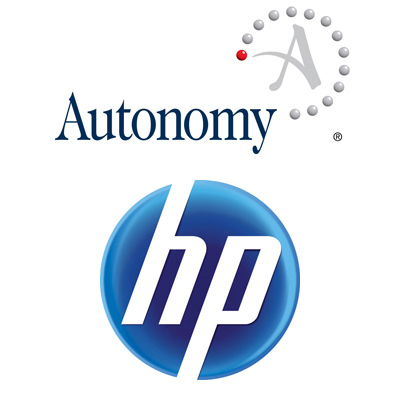
Adding Autonomy to Personalized Medicine
When HP acquired semantic search software company Autonomy over a year ago, a number of eyebrows rose as industry insiders argued about how the purchase would mesh with HP’s overall strategy.
 Since then, their plans for the buy have been playing out, most recently with HP’s announcements of support for Hadoop’s big data file system and some new enterprise analytics tools.
Since then, their plans for the buy have been playing out, most recently with HP’s announcements of support for Hadoop’s big data file system and some new enterprise analytics tools.
While grumblings persist about how HP plans to roll out the core search and data processing product that made Autonomy an attractive prospect in the first place (their Intelligent data Operating Layer, or IDOL), Autonomy seems to be operating, well, rather autonomously with expansive growth in its healthcare arm.
Autonomy has managed to attract some top talent to talk big data in healthcare, including Dr. Alan Stein, VP of Health Technologies. Stein recently delivered a TED talk at Fogelsom Auditorium in a Dallas hospital to talk about the cost-cutting benefits to better employing big data analytics, along with how it can advance the medical sciences in general. For Stein, the goal is to merge big data into personalized medicine.
Part of what makes Autonomy the “total package” for a company that is seeking inroads into major, expanding markets like healthcare is that Autonomy was establishing itself rather well in the healthcare industry before HP stepped in. They’ve since kept expanding, with growth that can parallel the explosion in healthcare spending.
Consider the United States, for example, which spends a remarkable amount of its GDP on healthcare, from about 5% in 1960 to over 20% in 2010. Meanwhile, other developed countries such as Great Britain and Japan spend somewhere near 10%. All software business success stories aside, Stein admits that while it might mean big growth for the companies that are propped up under such an industry, the important note is that relative health costs everywhere are rising at an unsustainable rate, as both Great Britain and Japan also started at near 5% fifty years ago.
 The bright spot in all this spending isn’t in the business for Stein, at least not when it comes to his focus—the quality of care in an inflated world of healthcare spending. For him the marriage between personalized medicine and new analytics technologies holds great promise that can address the spending and quality issues.
The bright spot in all this spending isn’t in the business for Stein, at least not when it comes to his focus—the quality of care in an inflated world of healthcare spending. For him the marriage between personalized medicine and new analytics technologies holds great promise that can address the spending and quality issues.
In particular, Stein believes that big data can be used in healthcare much like Google and Facebook use it for their enterprises. “Google is not a search engine, it’s an analytics company that masquerades as a search engine. And Facebook is not a social media network, it’s an analytics company that masquerades as a social media network.”
Here, Stein goes as far as to hint at a Watson-like analytics engine without actually mentioning the name (which in itself is rather impressive). That may be due to the interesting perspective Stein brings to thinking about big data, because you see, when Stein thinks of big data, he is really thinking of highly efficient statistical analysis. He harks back to the days of legendary nurse Florence Nightingale, who statistically studied the causes of deaths of soldiers. Studies of that kind are produced every day by medical professionals across the world.
Unfortunately, Stein notes that while there are many researchers, they are finite. However, the questions posed of theses researchers are not. Further, advanced statistical research is hindered by a predilection toward securing one’s data versus putting it out in the open so other researchers may use it. Of course, Stein realizes that such collaboration is not yet possible without security upgrades. “Privacy is another facet of our digital lives which is in turmoil.”
Another limiting factor in both human and especially computerized analytics is the ability to distinguish correlation from causation. While there are several obvious real-life examples to be made (Stein chose a city’s population of firefighters and instances of robbery), it is less obvious in medicine. Stein mentions a study conducted in the 90’s where a population of women was treated with hormone replacement therapy. This particular population ended up having a lower instance of coronary heart disease. However, it was found that was mostly due to the population consisting largely of upper middle class women who ate and exercised well.
All of these limitations aside, there exist real examples of big data analytics that contribute to the health care industry. Stein mentions Boston based HealthMap, which monitors informal media for potential outbreaks, as an example. “It was just published a couple of months ago how HealthMap could have detected the 2010 cholera outbreak in Haiti two weeks earlier than it was actually reported by the health care workers who were actually there on the ground.”
Stein sees this as both an exciting and nervous time for the relationship between big data and healthcare. It is exciting in the sense that the potential is seemingly limitless. It is nervous in that there is enormous pressure for analytics to fix inherent flaws in the system that may not be immediately fixed. Either way, it remains an interesting story to follow.
Related Stories
Chips, Stats & Stones: A Morning with SAS CEO Dr. Jim Goodnight
Understanding Data Intensive Analysis on Large-Scale HPC Compute Systems
Taking the Shock out of Sepsis with Big Data Analytics



























